March 8 Mardi Gras
Mardi Gras, French for “Fat Tuesday” marks the end of Carnival and the beginning of the Christian fasting of Lent. The biggest Mardi Gras celebration in the US is in New Orleans, Louisiana. Rio de Janeiro in Brazil also has a huge celebration. Find a Brazilian au pair in your cluster and ask her to tell you all about it.
Make Mardi Gras Pasta Necklaces
Coloring pasta is easy to do and gives kids something bright and beautiful to work with. Once the pasta is colored and dried, necklaces can be made by stringing on yarn.
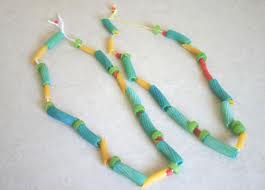
Supplies for Colored Pasta:
- Dried Pasta – any pasta works, but for stringing you will need tubed pasta. I used macaroni, penne, and wheels.
- Food coloring
- Rubbing alcohol
- Plastic baggies
- Paper towels
- String or Yarn
Place your dried pasta in a zip plastic baggie. Pour in 3-4 drops of your food coloring. Pour in 1 Tablespoon of Rubbing Alcohol. Now seal the bag and shake it all together. Make sure each piece of dried pasta gets coated.
Pour your colored pasta out on paper towel lined trays. Food coloring can stain, so be careful. You’ll want it completely dry before you start to work with it again, as you don’t want any color to drip. I put mine out in the sun to dry faster.
Get out your string or yarn and cut the length of a necklace for your child. Then tie a knot at one end, big enough that the pasta will stay there. I like to tie pasta in my knotted end so the others won’t fall off. I also like to put a little tape around the top of the string so it won’t fray as you string.
Have your child string on pasta, all sizes and shapes. You can introduce patterns or do counting with your child. Once they’ve hit the end of their string, tie the two sides together for a necklace around your child’s neck.
Make Mardi Gras Paper Plate Masks
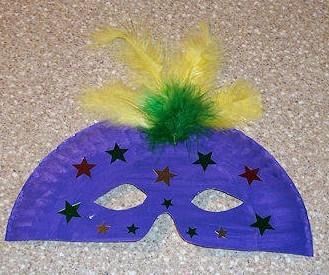
Supplies for Masks:
- Paper plates
- Color construction paperPlastic baggies
- Markers and/or crayons
- Glue
- Stickers
- Glitter
- Craft feathers
- Hole punch
- String
Cut a paper plate in half (you can make two masks per plate this way).
Cut eye holes in the half plate.
Shape the mask by cutting around the edges–scallops, points, curves or whatever suits you. Be sure to cut a curved groove between and beneath the two eye holes for the nose.
Place a line of white glue around the eye holes and along the edges of the mask. If you want, you can also create swirls or other patterns with glue on the mask.
Sprinkle glitter on top of the glue while it is still wet. Allow the glue to dry.
Decorate the mask as you see fit once the glue is dry. Use markers to color the white paper plate; glue feathers, beads or cut-out construction paper shapes to the mask; or add anything else that might make the mask colorful and festive.
Punch one small hole on each side of the mask and tie a string into the holes.


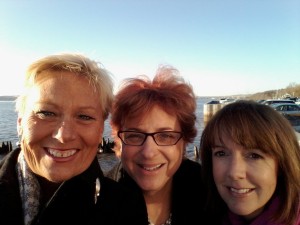

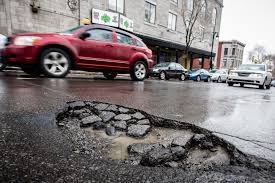

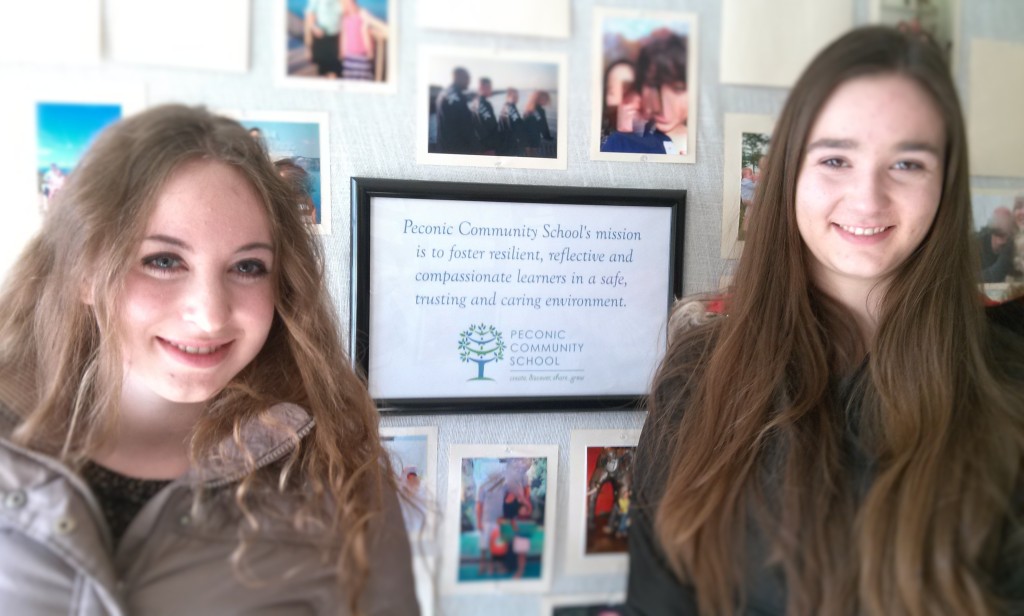
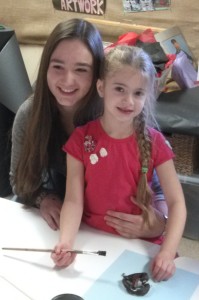
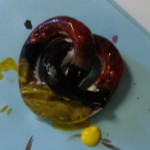
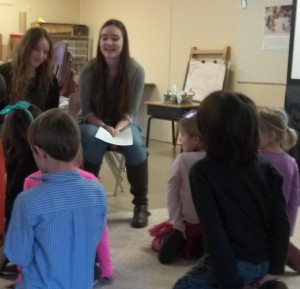
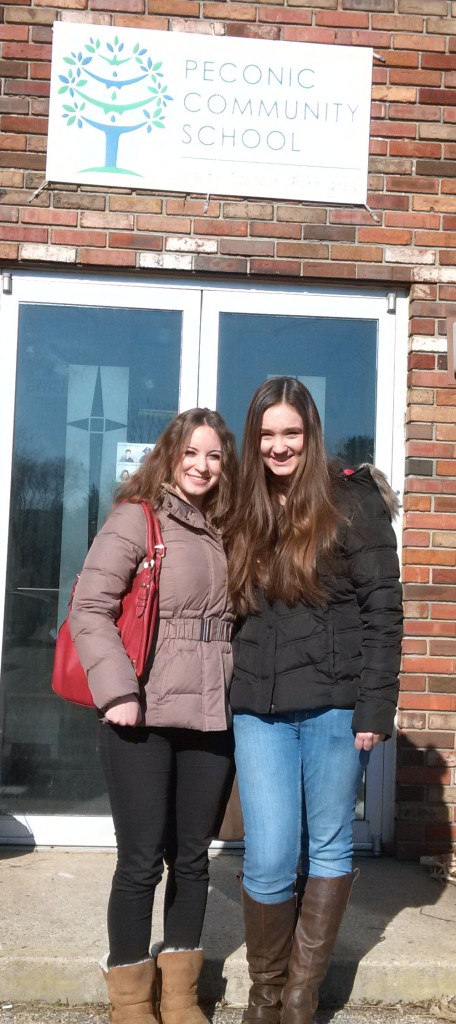
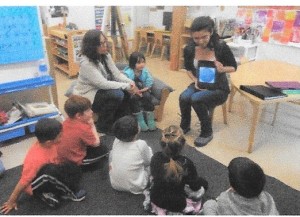
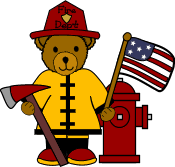 October is Fire Prevention Month and the American Red Cross is encouraging people to take steps to lessen the risk of a fire in their home.
October is Fire Prevention Month and the American Red Cross is encouraging people to take steps to lessen the risk of a fire in their home.
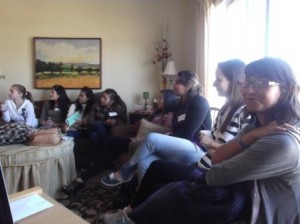 Taxes aren’t much fun, but they have to be done, even by au pairs. On Sunday, March 18th, Cindy Garruba Senior Community Counselor in Suffolk County for Au Pair in America helped the au pairs prepare their tax returns. Cindy handed out the forms, directions and provided the steps to complete the returns provided by Au Pair in America’s Stamford office. Taxes done, they will mail them in on or before the April 17th deadline date!
Taxes aren’t much fun, but they have to be done, even by au pairs. On Sunday, March 18th, Cindy Garruba Senior Community Counselor in Suffolk County for Au Pair in America helped the au pairs prepare their tax returns. Cindy handed out the forms, directions and provided the steps to complete the returns provided by Au Pair in America’s Stamford office. Taxes done, they will mail them in on or before the April 17th deadline date!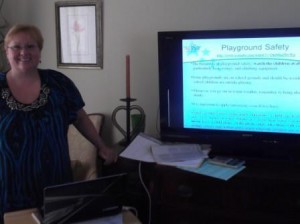 Since Spring has sprung early here on Long Island, we reviewed playground safety. Tips on safety can be found on the APIA website
Since Spring has sprung early here on Long Island, we reviewed playground safety. Tips on safety can be found on the APIA website 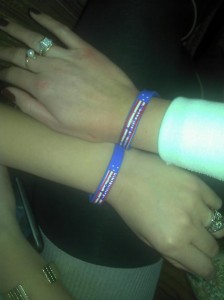
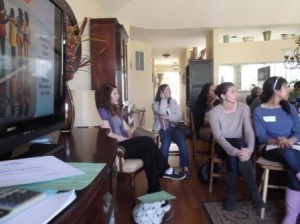 We also shared how important friendship is in the Au Pair program. “Strangers are just friends waiting to happen.” Lifelong friendships are formed as au pairs. We exchanged friendship bracelets to remember to reach out to each other when we need a friend!
We also shared how important friendship is in the Au Pair program. “Strangers are just friends waiting to happen.” Lifelong friendships are formed as au pairs. We exchanged friendship bracelets to remember to reach out to each other when we need a friend!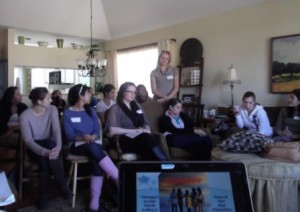
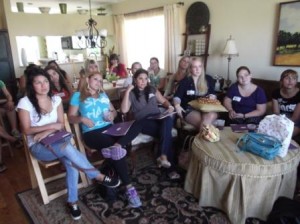 The Suffolk County cluster of Au Pair in America meeting in September was filled with au pairs and with important information. Cindy Garruba, Senior Community Counselor advised all host families to make sure their au pair attended this important meeting.
The Suffolk County cluster of Au Pair in America meeting in September was filled with au pairs and with important information. Cindy Garruba, Senior Community Counselor advised all host families to make sure their au pair attended this important meeting.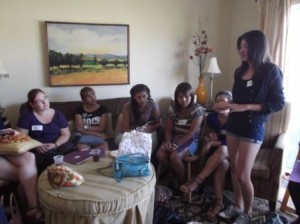 Along with the valuable lessons learned, the au pairs also had a chance to talk about themselves. They each told the group their name, their country, when they arrived in the USA, where their host family lives in Suffolk County, how many and the ages of their host children. The group includes au pairs from Europe, Asia and South America. Everyone made new friends!
Along with the valuable lessons learned, the au pairs also had a chance to talk about themselves. They each told the group their name, their country, when they arrived in the USA, where their host family lives in Suffolk County, how many and the ages of their host children. The group includes au pairs from Europe, Asia and South America. Everyone made new friends!
